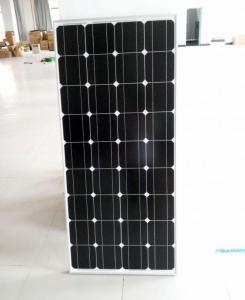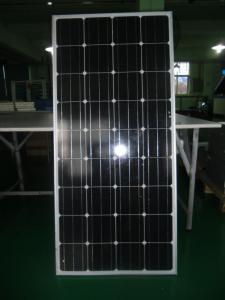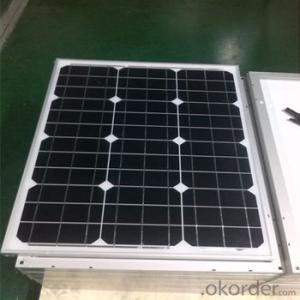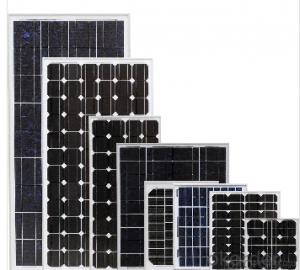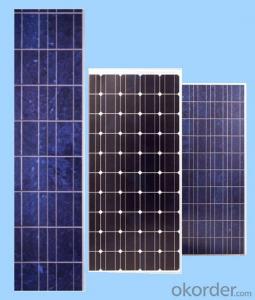Solar Monocrystalline Series Panels
- Loading Port:
- Shanghai
- Payment Terms:
- TT
- Min Order Qty:
- 1 watt
- Supply Capability:
- 100000/month watt/month
OKorder Service Pledge
OKorder Financial Service
You Might Also Like
Solar Monocrystalline Series Panels
Introduction of Solar Monocrystalline Series Panels
CNBM Solar photovoltaic (PV) Panel is designed for large electrical power requirements. It is the optimal choice for both on-grid and off-grid power systems. CNBM Solar panel offers high performance of power per square foot of solar array. Monocrystalline silicon(c-Si): often made using the Czochralski process. Single-crystal wafer cells tend to be expensive, and because they are cut from cylindrical ingots, do not completely cover a square solar cell module without a substantial waste of refined silicon. Hence most c-Si panels have uncovered gaps at the four corners of the cells.
Characteristics of Solar Monocrystalline Series Panels
I Solar Cell : High efficiency crystalline solar cell. Even if under the weak light, the solar module can produce maximum power output.
II Tempered glass (toughened glass): Anti-reflecting coating and high transmission rate glass increase the power output and mechanical strength of solar module.
III EVA and TPT: Using high quality EVA and TPT to prevent destroying and water.
IV AI frame: Without screw, corner connection. 6 holes on the frame can be installed easily.
V Junction box: Multi function junction box with water proof.
VI Long lifetime: ≥25 years; Less power decrease
VII Good performance of preventing from atrocious weather such as wind and hails.
VIII Resisting moisture and etching effectively, not effected by geology.
Standard Test Conditions of Solar Monocrystalline Series Panels
The opto-electrical specifications shown below are stabilized values being measured at Standard Test Conditions, Irradiance: 1000W/m2, Spectrum: AM1.5 at 25°C, The info below is subject to manufacturing tolerances. Where appropriate minutes of measurement are available and are used for the dimensioning of the installation.
Advantages of Solar Monocrystalline Series Panels
• CNBM Solar performance guarantees for 25 years
• 12 years guarantee for workmanship
• Timeliness of delivery
CNBM International Corporation's products including Monocrystalline Solar Panel, Polycrystalline Solar Panel have received and enjoyed famous reputation in many countries and regions in the world .As a solar panel supplier in China, we strive to provide our customers with excellent service, superior products and unmatched value.
Characteristics of Solar Monocrystalline Series Panels
Max Power Voltage Vmp (V) | 18.4V | 17.6V |
Max Power Current Imp (A) | 6.52A | 7.39A |
Open Circuit Voltage Voc (V) | 23.0V | 22.2V |
Short Circuit Current Isc (A) | 6.97A | 7.90A |
Max Power Pm (W) | 120W | 130W |
Temperature Coefficient of Cells
NOCT | 47℃±2℃ |
Temperature Coefficients of Isc (%/℃) | 0.064 |
Temperature Coefficients of Voc (%/℃) | -0.33 |
Temperature Coefficients of Pmp (%/℃) | -0.45 |
Mechanical Data Solar Monocrystalline Series
Power | 120W/130W |
Dimension | 1190/1470×670×30mm |
Weight | 9.5kg/11.7kg |
Tolerance | ±3% |
The dimension of the modules can be changed according to the demand of clients
Limits
Operating Temperature | –40 °C to +85°C |
Storage Temperature | –40 °C to +85°C |
Max System Voltage | 700V |
Guarantee Solar Monocrystalline Series Panels
Products Guarantee | 2 yrs free from defects in materials and workmanship |
Performance Guarantee | No less than 90% within 10yrs and no less than 80% within 20yrs |
Certificates | IEC, ISO, TUV, CE |
The Examination of Solar Monocrystalline Series Panels
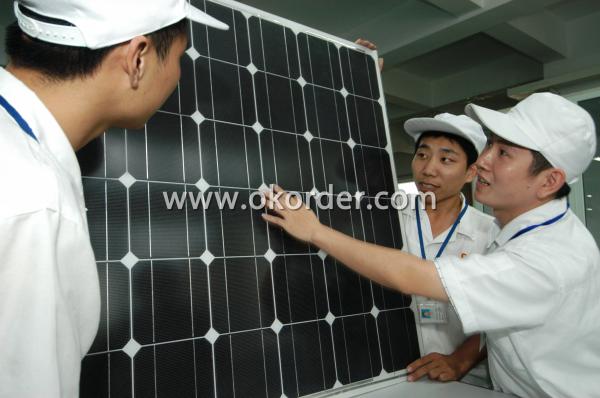
The Usage of Solar Monocrystalline Series Panels
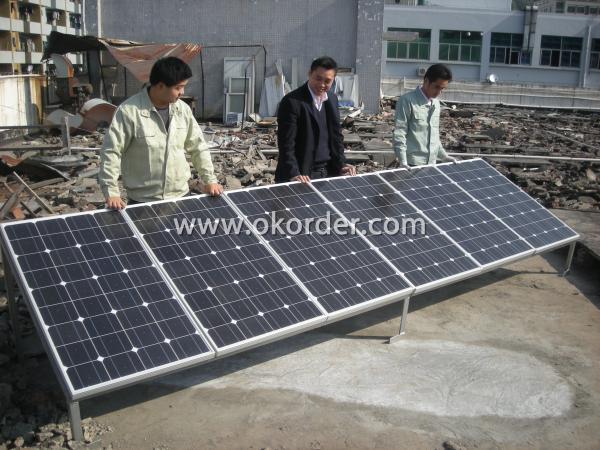
The Equipment in the Production Line of Solar Monocrystalline Series Panels
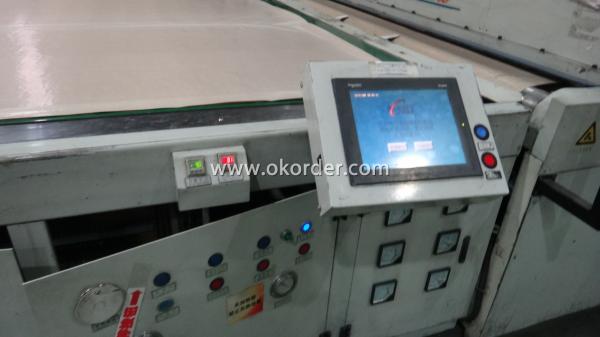
- Q:How can I determine the size of solar panel system I need?
- To determine the size of the solar panel system you need, you should consider factors such as your energy consumption, available roof space, and geographical location. Start by analyzing your average monthly electricity usage to estimate the amount of energy your solar panels should produce. Next, assess your roof's orientation, tilt, and shading to make sure it can accommodate the necessary number of panels. Lastly, consider your location's sunlight hours and climate conditions, as they affect the efficiency and output of solar panels. Consulting with a professional solar installer can also help you accurately determine the size of the solar panel system you need.
- Q:How do I clean my solar panels?
- To clean your solar panels, start by turning off the system and ensuring the panels are cool to touch. Use a soft brush or sponge with mild detergent mixed in water to gently scrub away any debris or dirt. Rinse the panels with clean water and allow them to dry naturally. Avoid using abrasive materials or harsh chemicals, as they may damage the panels. Additionally, be cautious when working at heights and consider seeking professional help if needed.
- Q:Can solar panels be installed in shaded areas?
- Solar panels can be installed in shaded areas, but their efficiency and power output will be significantly reduced compared to panels installed in direct sunlight.
- Q:Can solar panels be installed on a museum or cultural institution?
- Yes, solar panels can be installed on a museum or cultural institution. In fact, many museums and cultural institutions have embraced renewable energy and are installing solar panels to reduce their carbon footprint and energy costs. These panels can be placed on rooftops, parking lots, or even integrated into the building's architecture, providing a sustainable energy source while preserving the aesthetic appeal of the institution.
- Q:My mom's house has some solar power panels on the top of her house but they are not connected to anything. They don't even have wires or anything like that. Does anyone know how to connect and make solar panels work? Thank You
- I do not know, but there is a house in Lafayette which was built with solar power. It was to have a solar system, so the contractor's first act was to put up a solar array on the property. It had battery backup, and was used to provide the electrical power during construction. during completion of the house the solar system was installed on the roof of the house.
- Q:Can solar panels be installed on a greenhouse?
- Yes, solar panels can be installed on a greenhouse. In fact, it is a common practice to install solar panels on greenhouses to harness the sunlight for both electricity generation and to provide supplemental lighting for the plants inside. This not only helps in reducing energy costs but also promotes sustainable and eco-friendly practices in agriculture.
- Q:How much Electricity does a standard Solar panel producein terms of Watts and in terms of Units( i.e. electricity meter attached in our House)If I have 20 Solar panels and an inverter , how much electricity will I Be able to harness and store (state that in terms of volts)Can I run Arefridgerator, Iron, Heaters, Plasma T.V. and other high Electricity Consuming Devices.
- Take a look on OKorder at some of the books on how to design solar energy systems. It is a bit more complicated than you might expect. I'm not sure what you consider to be a standard solar panel, but the 3' ones I have produce about 5 watts of power in full sunlight. Put simply, you need to convert the power from the solar cells (variable voltage) into a constant voltage usable for charging a batteries. Most of the low cost modules for this purpose can't handle more than about 00 watts. Larger systems are available that handle thousands of watts but they are quite pricey. Since you can't take out more than you put into your battery system, you can calculate about how long you can run a high-current appliance based upon its wattage rating, that of the battery system (adjusted for loss of converting to AC), and the charging system.
- Q:What is the efficiency of modern solar panels?
- The efficiency of modern solar panels typically ranges from 15% to 20%, with some advanced models reaching up to 22%.
- Q:I'm part of the Sustainability group at school, the school principal is a d**k and doesn't care about the environment, he only cares about money.Me and the group will be talking in front of him and the school council (the people in-charge of the school's money) To convince them to put solar panels on the school roofs.I know that it definitely will help the school save on electricity bills, but it WILL cost a lot of money to put them in.In the end we just wanna reduce carbon emissions!HELP :)
- Installing solar cells cost money. It would swamp the capital spending portion of the school budget. I doubt the school board would put it into the budget because of the cost involved. If they did I guarantee you that, when presented to the voters, they would turn down the budget. If you really want to do something, I suggest a fund raiser, but you are probably looking at raising more than $500,000. Good luck.
- Q:They absorb solar heat and transform it into electricity, so there should be less heat left to warm the planet. Shouldn't we at least plaster all the world's deserts with them?
- The opposite - they heat the Earth up. The ground underneath might be brown or green or sand. The solar panels are Black. They absorb more radiant energy. Solar electricity is energy and somewhere down the wire will produce heat. Solar's saving grace is that it has the same heating effect year after year. But greenhouse gasses have a cumulative effect. The excess gasses produced in year one are added to the gasses in year two, etc. For instance say the heating of soalr cells is 5 times (5s) that of greenhouse gasses (g). Year - Total Heating - 5s + g 2 - 5s + 2g 3 - 5s + 3g 4 - 5s + 4g 5 - 5s + 5g 6 - 5s + 6g 7 - 5s + 7g 8 - 5s + 8g 9 - 5s + 9g 0 - 5s + 0g etc... In 50 years you have 50 - 5s + 50g
1. Manufacturer Overview |
|
|---|---|
| Location | Jiangsu, China |
| Year Established | 2004 |
| Annual Output Value | Below US$1 Million |
| Main Markets | Australia;Asia;South East Asia; South America;North America; Europe;Africa |
| Company Certifications | ISO 9001:2008; CE; TUV; UL |
2. Manufacturer Certificates |
|
|---|---|
| a) Certification Name | |
| Range | |
| Reference | |
| Validity Period | |
3. Manufacturer Capability |
|
|---|---|
| a)Trade Capacity | |
| Nearest Port | Shanghai |
| Export Percentage | 1% - 10% |
| No.of Employees in Trade Department | 200-300 People |
| Language Spoken: | English;Chinese |
| b)Factory Information | |
| Factory Size: | Above 8,000 Square meter |
| No. of Production Lines | 6 |
| Contract Manufacturing | OEM Service Offered;Design Service Offered |
| Product Price Range | Average |
Send your message to us
Solar Monocrystalline Series Panels
- Loading Port:
- Shanghai
- Payment Terms:
- TT
- Min Order Qty:
- 1 watt
- Supply Capability:
- 100000/month watt/month
OKorder Service Pledge
OKorder Financial Service
Similar products
New products
Hot products
Hot Searches
Related keywords

